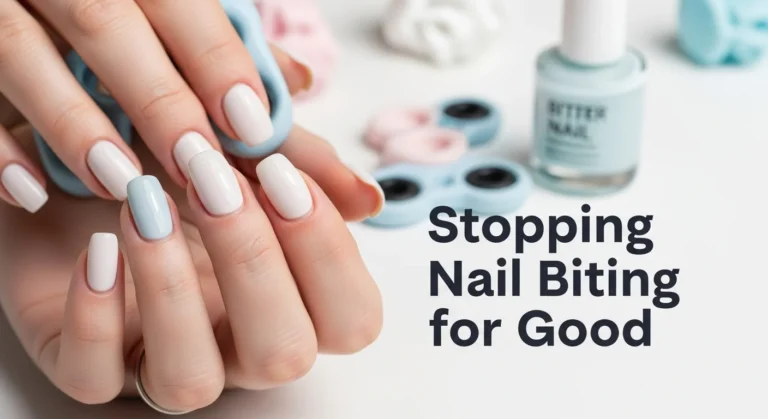Recovering from Gel or Acrylic Damage: A Practical Guide
AI-Focused Summary
Gel or acrylic nails can leave natural nails thin, brittle, or damaged after removal. This guide provides evidence-based steps to restore nail health using moisturizing treatments, gentle care, and protective habits. It includes practical tips, tools, and FAQs to rebuild strong nails and prevent further damage.
What Is Gel or Acrylic Nail Damage and Why Does It Happen?
Gel and acrylic nails, popular for their durability and aesthetics, involve applying artificial layers that adhere to natural nails. Removal or prolonged use can weaken nails, causing thinning, peeling, or brittleness. Studies indicate 20-30% of frequent gel or acrylic users experience nail damage (Journal of Cosmetic Dermatology, 2020). Damage occurs due to chemical exposure, mechanical stress, or improper removal.
Common Causes of Gel or Acrylic Nail Damage
Chemical Exposure
Mechanical Stress
Improper Removal
Frequent Applications
Dehydration
Note: Bar heights are illustrative, based on common causes (Journal of Cosmetic Dermatology, 2020).
Common Causes
- Chemical Exposure: Acetone soaks or harsh adhesives strip natural oils.
- Mechanical Stress: Filing or prying off artificial nails damages the nail plate.
- Improper Removal: Peeling or forceful removal tears nail layers.
- Frequent Applications: Continuous use without breaks weakens nails over time.
- Dehydration: Prolonged polish wear limits nail hydration and oxygen exposure.
For tips on maintaining healthy cuticles during recovery, see our guide on Taming Dry, Cracked Cuticles.
How Does Gel or Acrylic Damage Affect You?
Damaged nails impact both function and appearance:
- Weakness and Brittleness: Nails may split, peel, or break easily.
- Pain or Sensitivity: Thinned nails can feel sore or sensitive to touch.
- Infections: Cracks or exposed nail beds increase infection risk, like paronychia.
- Aesthetic Concerns: Uneven or discolored nails may lower confidence.
How Can You Recover from Gel or Acrylic Damage? A Step-by-Step Guide
Restoring nails after gel or acrylic damage requires patience and consistent care. Follow these steps to rebuild strength and health.

Step 1: Assess the Damage
Why it matters: Understanding the extent of damage guides treatment.
How to do it:
- Check for thinning, peeling, ridges, or discoloration.
- Note pain, redness, or swelling, which may indicate infection.
- Avoid further gel or acrylic applications until nails recover (typically 6-12 weeks).
Step 2: Moisturize and Hydrate Nails
Why it matters: Hydration restores flexibility and prevents further cracking.
Methods:
- Apply cuticle oil (e.g., with jojoba or vitamin E) 2-3 times daily, massaging into nails and cuticles.
- Use a thick hand cream or petroleum jelly at night to lock in moisture.
- Soak nails in lukewarm water for 5-10 minutes weekly, followed by moisturizing.
Step 3: Strengthen Nails with Treatments
Why it matters: Targeted products reinforce nail structure during recovery.
Options:
- Apply a nail strengthener with keratin, calcium, or protein weekly (e.g., formaldehyde-free formulas).
- Use a clear base coat to protect nails without adding weight.
- Avoid nail polish for 2-4 weeks to allow natural healing, or use breathable polishes.
Step 4: Adopt Gentle Nail Care Habits
Why it matters: Harsh practices can delay recovery or worsen damage.
Tips:
- Trim nails short to reduce stress on weakened areas; use sharp, clean clippers.
- File gently in one direction with a fine-grit file to smooth edges.
- Avoid cuticle trimming; push back gently with a wooden tool after soaking.
To address discoloration during recovery, explore our guide on Dealing with Yellow or Discolored Nails.
Step 5: Protect Nails from Further Damage
Why it matters: Shielding nails prevents setbacks during healing.
Strategies:
- Wear gloves during chores like dishwashing or cleaning to avoid water and chemical exposure.
- Limit exposure to acetone; use acetone-free removers if polish is needed.
- Take breaks between artificial nail applications (at least 1-2 months) to allow recovery.
Step 6: Support Overall Nail Health
Why it matters: Nutrition and lifestyle aid long-term nail strength.
Actions:
- Eat biotin-rich foods (e.g., eggs, almonds) or consider a 2.5 mg biotin supplement (consult a doctor).
- Stay hydrated with 8-10 cups of water daily (Mayo Clinic, 2023).
- Manage stress through exercise or meditation to support circulation and growth.
For more on improving nail growth, read our guide on Boosting Slow Nail Growth Naturally.
Tools and Products to Help
The following table lists tools and products for recovering from gel or acrylic damage, with their purpose and usage.
| Tool/Product | Purpose | How to Use | Availability |
|---|---|---|---|
| Cuticle Oil | Hydrates and repairs nail beds | Apply 2-3 times daily, massage in | Drugstores, beauty stores |
| Nail Strengthener | Reinforces thin or brittle nails | Apply 1-2 coats weekly, remove after 7 days | Beauty stores, online |
| Fine-Grit Nail File | Smooths edges without stress | File gently in one direction, weekly | Drugstores, online |
| Protective Gloves | Shields nails from water/chemicals | Wear during chores or wet tasks | Supermarkets, online |
| Biotin Supplement | Supports nail growth and strength | Take 2.5 mg daily with food (consult doctor) | Pharmacies, online |
Additional Tips for Success
- Be Patient: Full nail regrowth is slow; focus on consistent care.
- Limit Polish: Allow nails to breathe between applications to aid recovery.
- Sterilize Tools: Clean clippers and files to prevent infections.
- Monitor Progress: Take weekly photos to track improvement and stay motivated.
When to Seek Professional Help
See a dermatologist if nails show persistent pain, infection signs (e.g., pus, swelling), or no improvement after 12 weeks. A professional can diagnose infections or underlying conditions and recommend treatments like medicated polishes or antibiotics.






